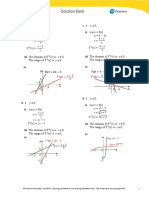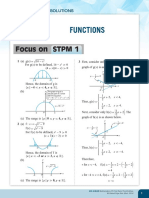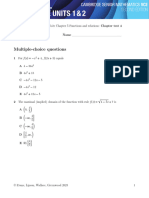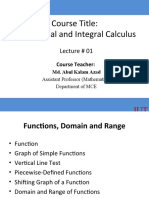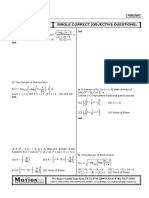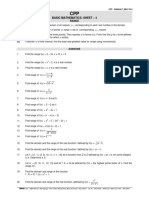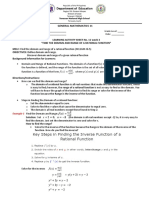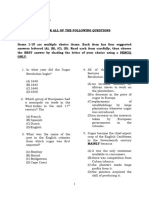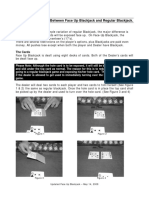0% found this document useful (0 votes)
28 views5 pagesFunctions of One Variable DPP 1
The document contains a series of mathematical questions and solutions related to functions of one variable, specifically focusing on their domains and ranges. It includes multiple-choice questions (Q1-Q10) with corresponding answer keys and detailed text solutions for each question. The content is aimed at preparing students for the IIT JAM Mathematics exam in 2025.
Uploaded by
ArbaanCopyright
© © All Rights Reserved
We take content rights seriously. If you suspect this is your content, claim it here.
Available Formats
Download as PDF, TXT or read online on Scribd
0% found this document useful (0 votes)
28 views5 pagesFunctions of One Variable DPP 1
The document contains a series of mathematical questions and solutions related to functions of one variable, specifically focusing on their domains and ranges. It includes multiple-choice questions (Q1-Q10) with corresponding answer keys and detailed text solutions for each question. The content is aimed at preparing students for the IIT JAM Mathematics exam in 2025.
Uploaded by
ArbaanCopyright
© © All Rights Reserved
We take content rights seriously. If you suspect this is your content, claim it here.
Available Formats
Download as PDF, TXT or read online on Scribd
/ 5
